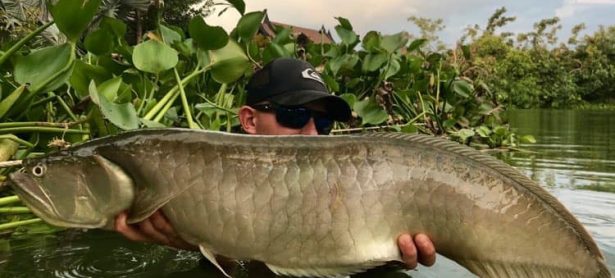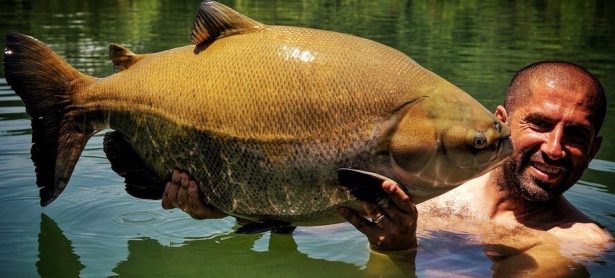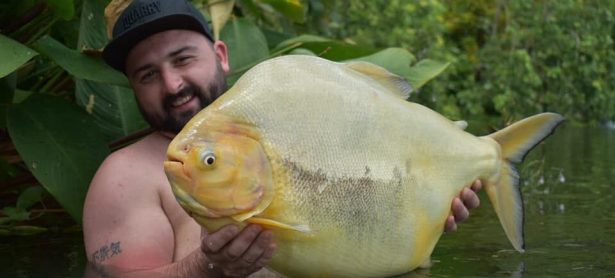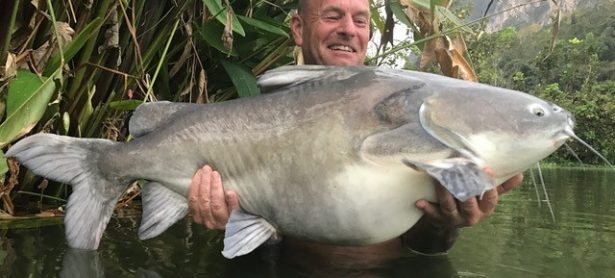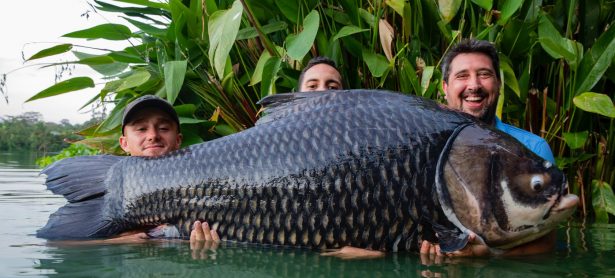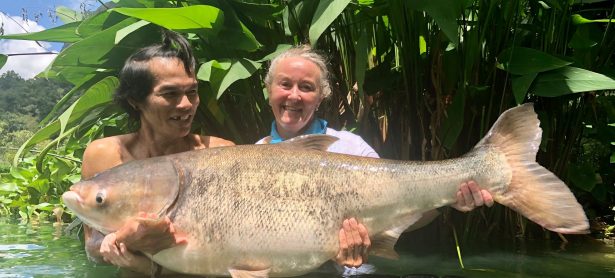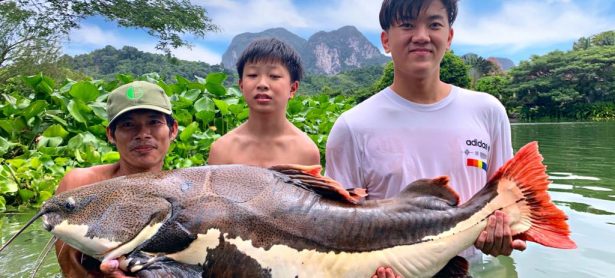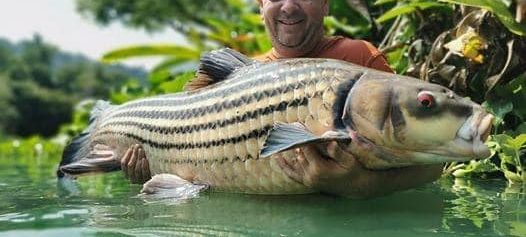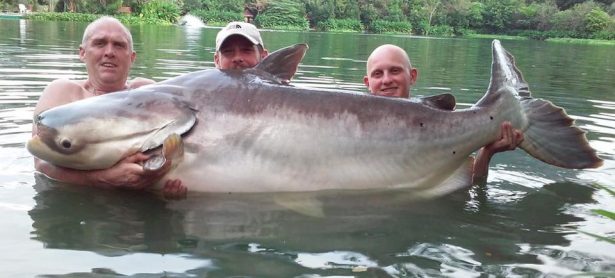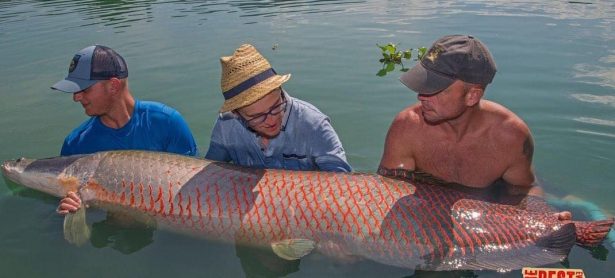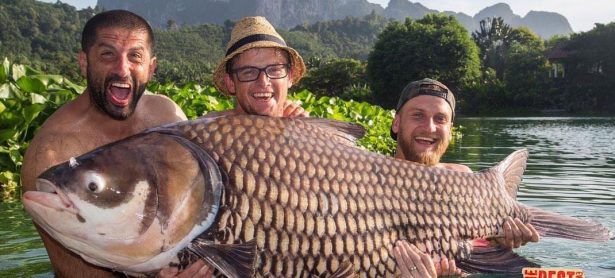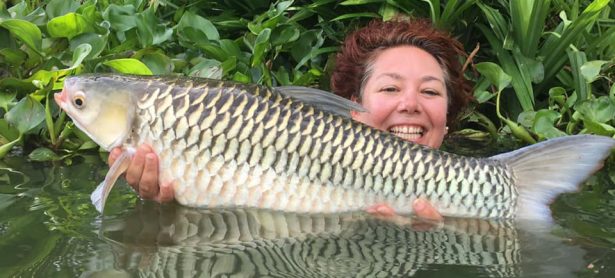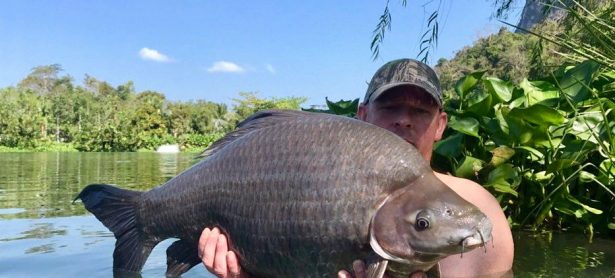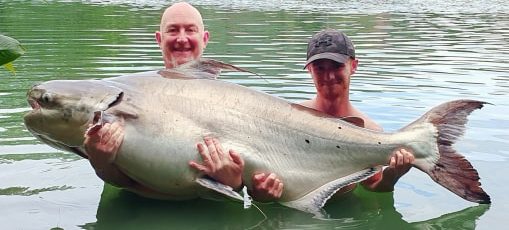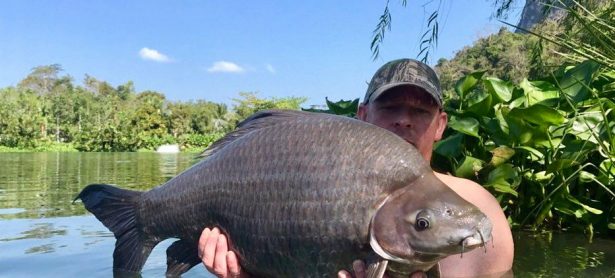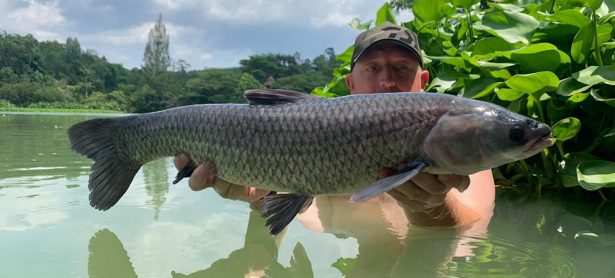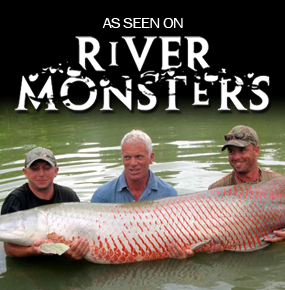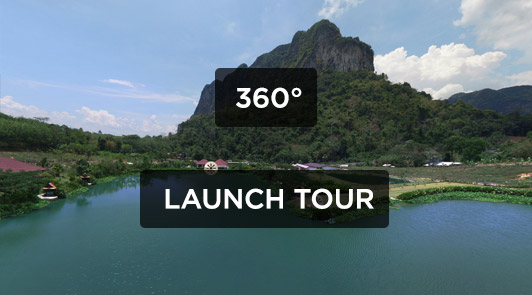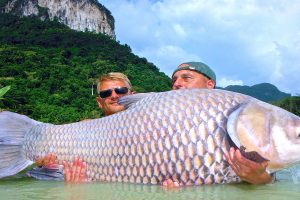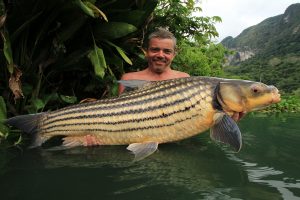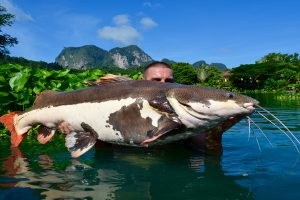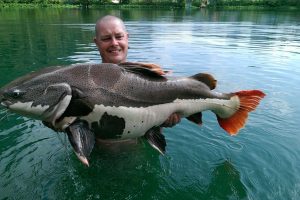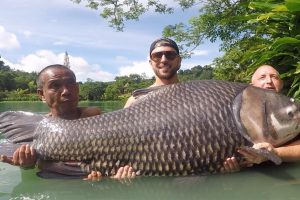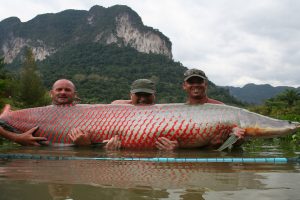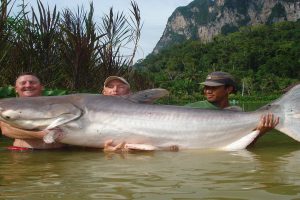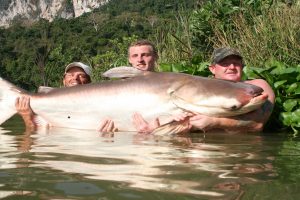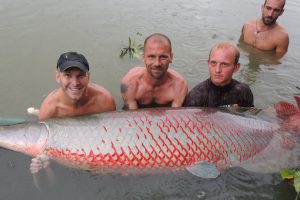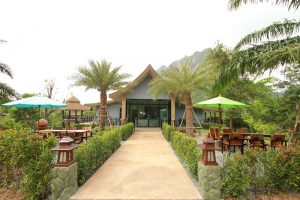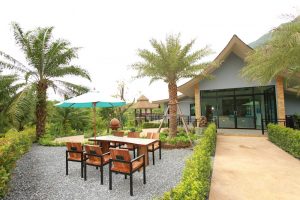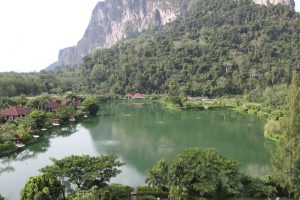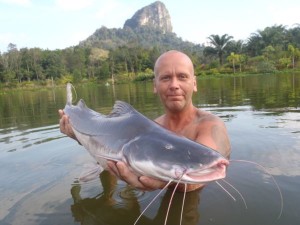 Name: Piraiba, or Lau lau.
Name: Piraiba, or Lau lau.
Other names: Bagre blanco, blanco pobre.
Species: Brachyplatystoma filamentosum.
Thai name: Pla pireeba.
Max length: 3.6m.
Max weight: 250kg.
IGFA record: 155kg (341lb.11oz.)
Diet: fish, pellet, frogs, waterfowl, monkeys, scavenger almost any food item.
The piraaiba is a new species to Gillhams; we have been trying to obtain these awesome catfish ever since we came to Thailand, and we believe these fish will eventually take over as the main target fish for travelling anglers once they reach weights over 50kg, which on our reckoning will be within five years! We only introduced piraaiba in September 2010, and as such we cannot really give an accurate idea of how to target them. However in the wilds of South America they are fished for in the slack water below rapids and waterfalls, using large fish chunks on the riverbed. They are reputed to be one of the hardest-fighting freshwater fish on the planet. They make long, hard, deep runs, never giving up, and they can also turn at very fast speeds in a tight area.
It is believed that in lakes such as ours they would take large flies on sinking lines. There is very little information on fly fishing for them, but as with all large flies fished here you must use a 12wt fly rod and line with a minimum 35lb leader. They seem to prefer deep water over soft bottoms, so we would recommend trying for them in the silt channels that run round the central plateaus. Use large fish chunks in conjunction with our sunken bubble float method to create minimum resistance, and please ask on arrival for any updates if you wish to target this powerful catfish. As with all our catfish they must be injected prior to release by our staff to ensure their wellbeing. They are very hardy fish but do take care of their sharp pointed pectoral fins when holding them for a photo. They do not like hot water temperatures so please take pictures and return them ASAP.
General facts on the piraaiba or lau lau:
The piraaiba are not indigenous to Thailand; they originate from South America: Amazon and Orinoco river basins and major rivers of Guiana and Northeast Brazil with reports also of them in Argentina. They have a grey upper body with a cream belly and a very pronounced lateral line. It is a member of the shovel nosed catfish family with medium length whiskers. The top lobe of their tail has a long threadlike ending, which gives them incredible speed and turning ability. They spawn in river mouths over soft mud, but spawning is more successful when they can reach brackish water.
Piraaiba do not reach sexual maturity until they are 14 years old, which along with commercial fishing for their fine eating qualities is one of the leading factors in them being on the endangered species list. Their preferred diet is other fish, but since they are scavengers of any dead animal, their stomachs have been found to contain monkeys and even human remains! The piraaiba here at Gillhams are the first to be spawned artificially here in Thailand. As with the Amazon red tail catfish, once a breeder has stripped these fish of their eggs once, they can no longer reproduce, making them only valuable to sell to commercial fisheries like ours.



